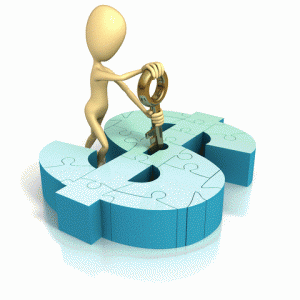Once upon a time, “clocking in” meant sliding a card into a chunky punch machine and hearing that satisfying clunk. These days, half the workforce might be logging in from home, a café in Tiong Bahru, or a co-working space overlooking Marina Bay. HR teams in Singapore have had to rethink how they track attendance, productivity, and working hours when there’s no physical office door for people to walk through.
This is where modern time and attendance systems come into play. They’re no longer just about recording who’s in and who’s out, but have become critical tools for managing remote work, ensuring compliance, and keeping both employers and employees on the same page.
Let’s look at how these systems are helping HR teams in Singapore tackle the realities of remote work.
1. Real-Time Attendance Tracking, Anywhere
One of the biggest challenges with remote work is visibility. How do you know your team is working their contracted hours without resorting to constant check-ins or micromanagement?
A time and attendance system like Million allows employees to log in from anywhere using secure apps or web portals. GPS tagging can confirm location (handy if your remote worker is meant to be on-site with a client), while real-time dashboards give HR a live view of who’s on the clock.
For HR teams, this means no more chasing timesheets or piecing together attendance records from multiple emails. It’s all centralised, accurate, and accessible in seconds.
2. Compliance with Singapore’s Employment Regulations
Singapore’s Ministry of Manpower (MOM) has clear rules on working hours, overtime, and rest days. Even in a remote setting, employers must keep accurate records to avoid disputes or penalties.
Time and attendance systems automate much of this compliance work. They can calculate overtime pay, track mandatory breaks, and generate reports that align with MOM requirements. If there’s ever a dispute about hours worked or overtime claims, HR can simply pull up the system’s audit trail — no guesswork, no lost paperwork.
3. Simplified Payroll Integration
Payroll accuracy is closely tied to attendance data. Get one wrong, and you risk underpaying or overpaying staff, both of which create trust issues and extra admin.
A robust time and attendance system integrates directly with payroll software. When an employee clocks in late, leaves early, or logs overtime, the payroll system adjusts automatically. For HR teams managing remote staff, this eliminates the tedious process of manually transferring data between systems and reduces the risk of costly mistakes.
4. Flexible Scheduling for a Hybrid Workforce
Many companies in Singapore have adopted hybrid work arrangements — part office, part remote. Managing schedules for such a setup can become a logistical headache without the right tools.
Time and attendance systems let HR create, share, and adjust schedules in real time. Changes are instantly visible to employees, whether they’re in the office or at home. This flexibility not only keeps operations running smoothly but also improves employee satisfaction, as everyone knows exactly when and where they’re expected to work.
5. Clearer Productivity Insights
Tracking attendance is only part of the picture. HR teams also need to understand productivity trends, especially when managing remote teams.
Many modern systems offer analytics dashboards showing patterns like frequent late log-ins, high overtime usage, or recurring absences. These insights help HR address potential issues early, whether it’s burnout, disengagement, or simply a need for better resource allocation.
For example, if one team is consistently logging extra hours, it might indicate understaffing or poor workload distribution. Having hard data enables HR to make informed decisions instead of relying on assumptions.
6. Greater Transparency for Employees
Remote work can sometimes lead to feelings of disconnection or mistrust on both sides. Employees might worry about being overlooked for promotions if they’re “out of sight,” while managers might question if remote staff are fully engaged.
Time and attendance systems promote transparency. Employees can see their own attendance records, overtime balances, and leave entitlements in real time. This openness reduces misunderstandings and builds trust, especially important when face-to-face interactions are limited.
7. Streamlined Leave Management
Leave requests can be a nightmare to manage over email, especially when a team is scattered across locations. Time and attendance systems often include integrated leave management modules.
Employees can apply for leave via the same portal they use for clocking in, and managers can approve or decline requests with a single click. The system automatically updates attendance records and schedules, ensuring there are no unpleasant surprises when payroll runs.
8. Security and Data Protection
With remote work, HR data is often accessed from multiple devices and locations. That creates potential security risks if proper systems aren’t in place.
Time and attendance platforms designed for enterprise use include security features like encrypted data transfer, role-based access controls, and compliance with Singapore’s Personal Data Protection Act (PDPA). For HR, this means peace of mind knowing sensitive attendance and payroll data is protected from prying eyes.
9. Easy Adaptation to Changing Work Models
If the pandemic taught us anything, it’s that work models can shift overnight. Businesses that once swore by 9-to-5 office hours now embrace flexible schedules and remote work.
A good time and attendance system can adapt to these shifts with minimal disruption. Whether your company decides to go fully remote, return to the office, or adopt a hybrid model, the system continues tracking attendance accurately without requiring a complete overhaul.
10. Supporting Employee Wellbeing
Interestingly, attendance data can also be a wellbeing tool. By spotting patterns of excessive overtime or frequent sick leave, HR can step in to offer support before issues escalate.
For example, an employee consistently clocking in late might be struggling with childcare arrangements. Instead of issuing warnings, HR could explore flexible start times or alternative working arrangements — something much easier to negotiate when you have clear, reliable data to work with.
Making Remote Work Tracking Work for You
In Singapore’s competitive business environment, time is literally money, and so is accurate attendance data. For HR teams, a time and attendance system isn’t just an operational convenience; it’s a strategic advantage.
By automating record-keeping, ensuring compliance, and offering actionable insights, these systems free HR from repetitive admin and allow them to focus on what really matters: building a productive, engaged, and supported workforce.
As remote work becomes a permanent fixture for many companies, the ability to track attendance seamlessly — without micromanaging — could be the difference between thriving and merely surviving.














